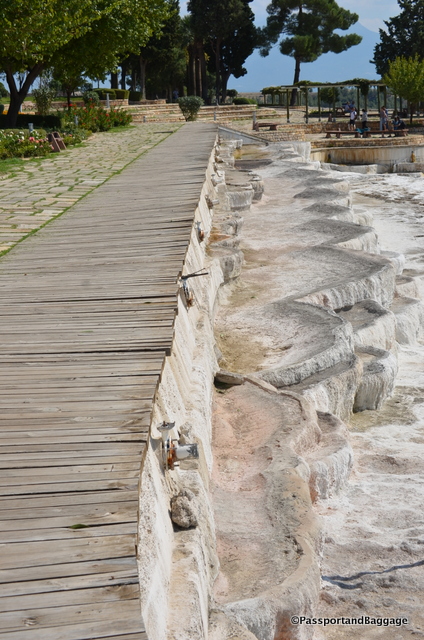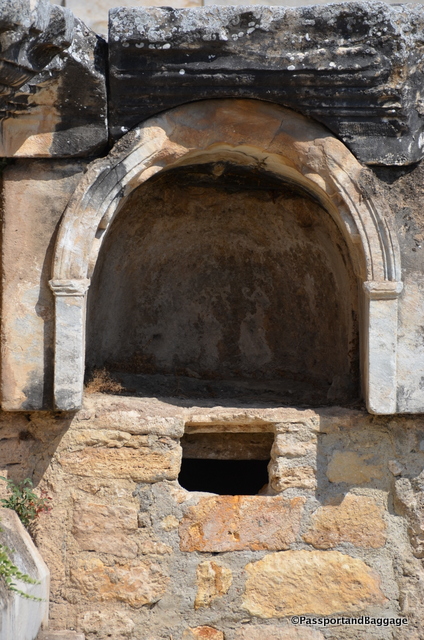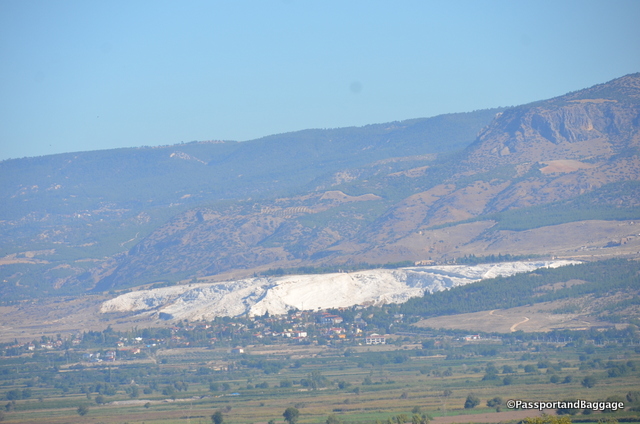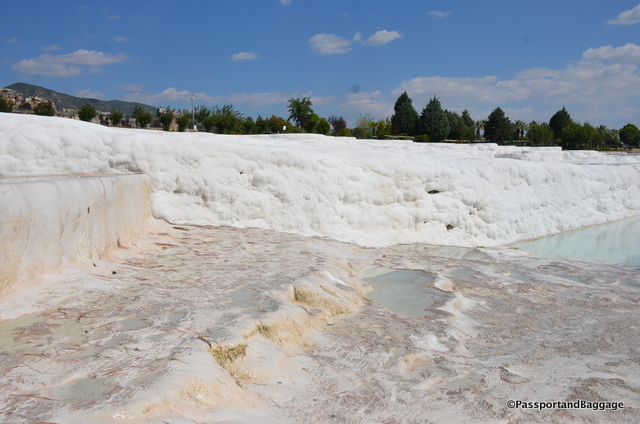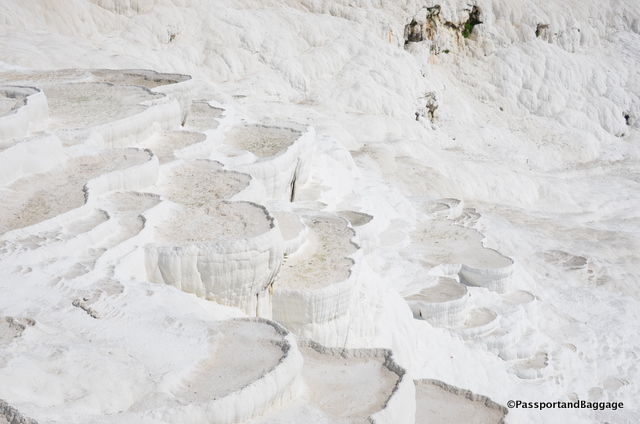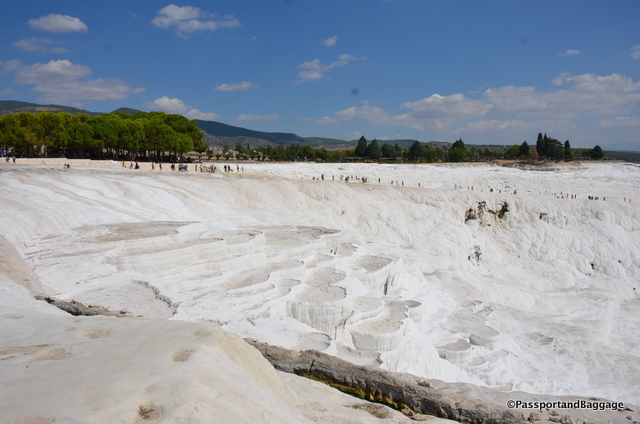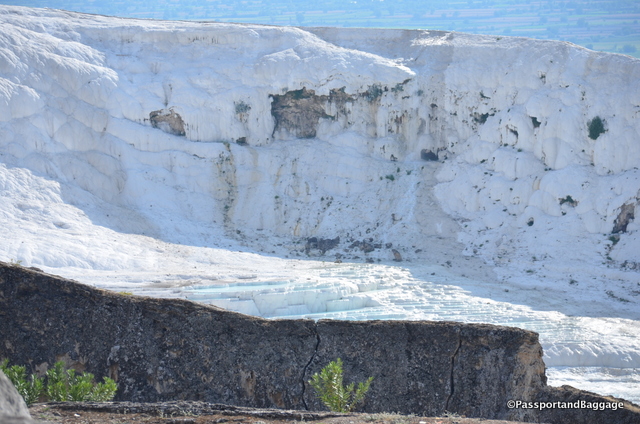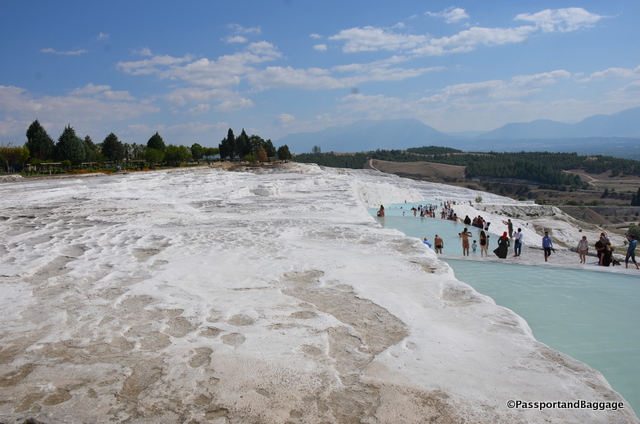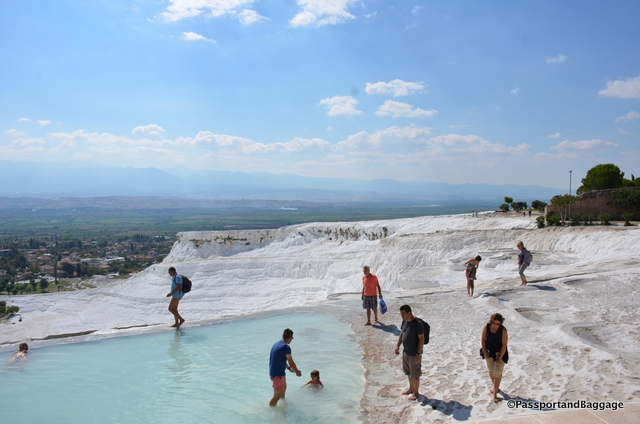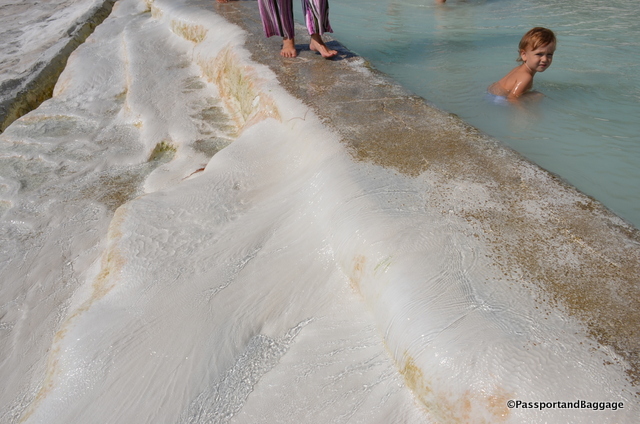September 24, 2016
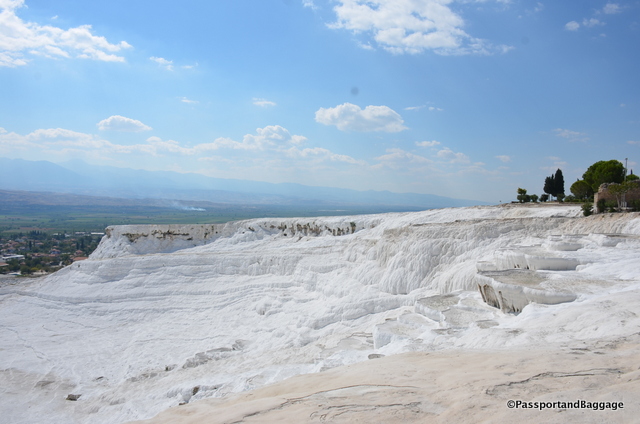 Pamukkale means “cotton castle” in Turkish. The area contains hot springs and terraces of carbonate minerals left by flowing water.
Pamukkale means “cotton castle” in Turkish. The area contains hot springs and terraces of carbonate minerals left by flowing water.
The ancient Greco-Roman and Byzantine city of Hierapolis was built on top of the white “castle” which is 8,860 feet long, 1,970 feet wide and 525 feet high, and too awe inspiring to capture in words or photos.
It is difficult to completely understand how one gets travertine from this flow of water, but I am going to try. The water comes out of the ground at 95 degrees F, and contains a high concentration of calcium carbonate. When that comes in contact with oxygen it forms carbon dioxide and carbon monoxide gases, which then evaporate and leave deposits of calcium carbonate. Initially the deposits are like soft jelly and then harden over time forming what is called travertine.
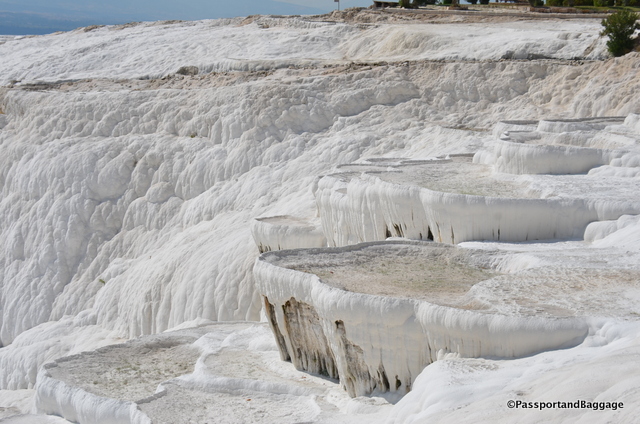 In 1988, together with the ruins of Hierapolis, Pamukkale became a protected UNESCO World Heritage Site. However, before the designation the terraces were in danger of being destroyed through a combination of neglect and commercial development. Hotels were built at the top of the site, partly obscuring ruins of Hierapolis, and wear and tear from the feet and shoes of visitors had scarred and turned many of the pools brown.
In 1988, together with the ruins of Hierapolis, Pamukkale became a protected UNESCO World Heritage Site. However, before the designation the terraces were in danger of being destroyed through a combination of neglect and commercial development. Hotels were built at the top of the site, partly obscuring ruins of Hierapolis, and wear and tear from the feet and shoes of visitors had scarred and turned many of the pools brown.
The efforts to protect the delicate natural phenomenon have dramatically changed the area. The hotels have been demolished, and in an effort to allow the pools natural white appearance to be maintained, access to the pools is tightly restricted, and water released from the spring is controlled and only distributed to a few pools at a time.
Another reason for the controlled water flow is that if a large amount of water is allowed to flow on a certain area for too long it leads to moss formation and darkening of the color of the travertine.
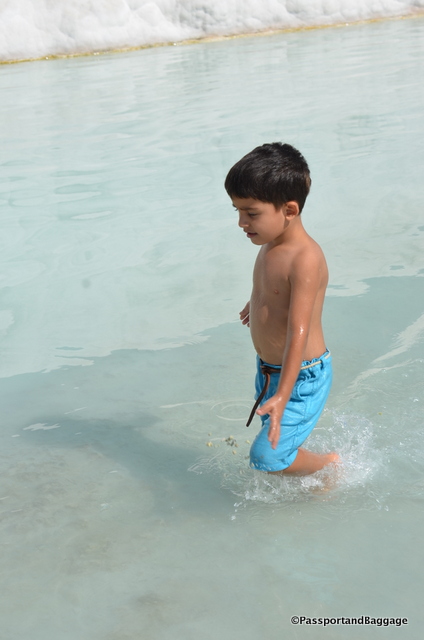 Artificial pools for bathing tourists have been added.
Artificial pools for bathing tourists have been added.
Most of us know Travertine as the Italian building material. It is a form of limestone deposited by mineral springs around the world, such as Pamukkale. Travertine has a fibrous or concentric appearance and exists in white, tan, cream-colored, and even rusty varieties.
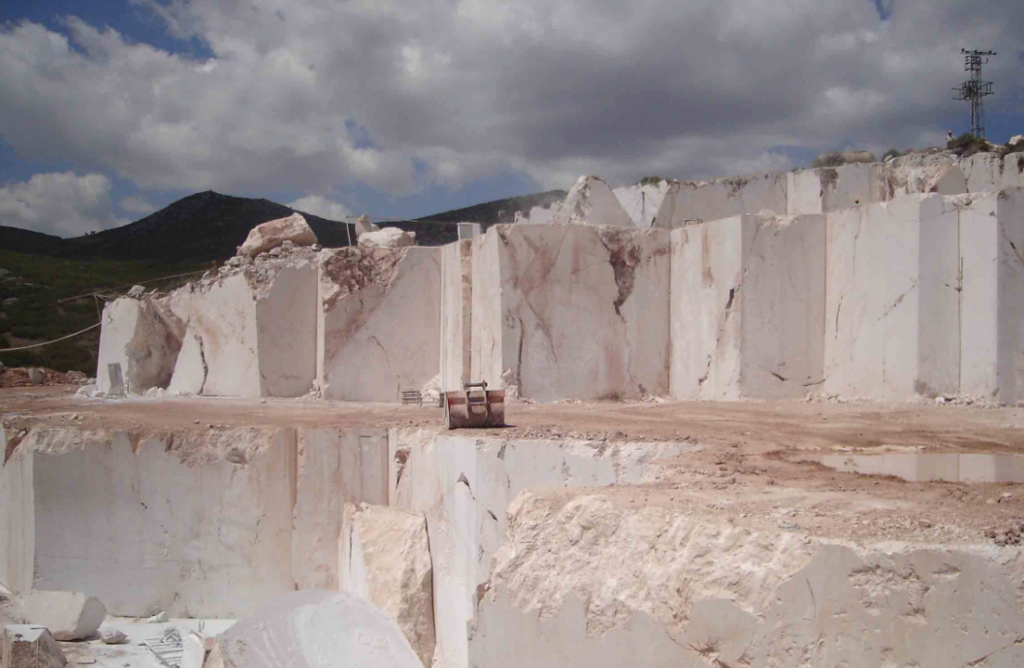
Travertine is not mined at Pamukkale, it is to valuable an area as a tourist spot, but mining Travertine is very similar to mining marble.
The underground volcanic activity, which causes the hot springs, also forced carbon dioxide into a cave, which was called the Plutonium, which in this case, means “place of the god Pluto”. Priests of Cybele, who found ways to appear immune to the suffocating gas, used this cave for religious purposes. The Plutonium can be found just below the theater in Hieropolis, and just above the pools of Pamukkale.
You can see Pamukkale for miles, it is simply too large to comprehend in one fell swoop.
Some more shots from the Cotton Castle:
